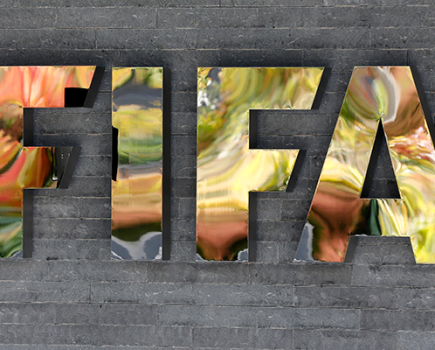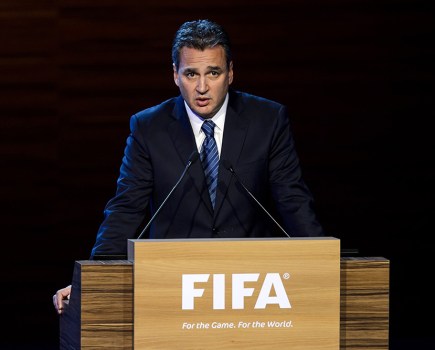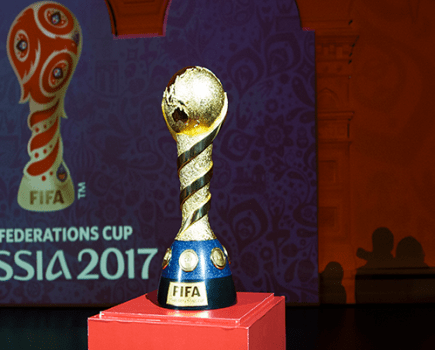 A World Cup draw which began in sombre style, featuring a tribute to Nelson Mandela and an appeal for peace on the streets from Sepp Blatter, ended with the maximum frenetic drama possible being wrung from expectation ahead of the finals in Brazil next June and July.
A World Cup draw which began in sombre style, featuring a tribute to Nelson Mandela and an appeal for peace on the streets from Sepp Blatter, ended with the maximum frenetic drama possible being wrung from expectation ahead of the finals in Brazil next June and July.
Hosts and favourites will kick off against Croatia; England (by the hands of Sir Geoff Hurst) face a hot and humid start against Italy in Manaus; Germany’s Joachim Low will come up against the man who launched his national team career in now-US coach Jurgen Klinsmann; and champions Spain begin against the Dutch opponents who tried in vain to kick them off the pitch in the 2010 final.
Add into that yet a further repeat for Argentina and Nigeria, the match-up after which Diego Maradona notoriously failed a dope test in 1994, and the media can make the very most of the ride all the way back to Brazil next year.
The death of Mandela was acknowledged in an opening montage of Madiba’s involvement in bringing the World Cup to South Africa four years ago plus a muddled few seconds’ silence/applause. Then it was on with the show, led by presidents Dilma Rousseff of Brazil and Blatter of FIFA.
Blatter took the opportunity to issue a barely veiled appeal to Brazilians to forget about repeating the Confederation Cup demonstrations while the World Cup circus was in town.
He said: “It was time that the World Cup came back to Brazil. Next year it will 60 years since Brazil first organised the World Cup and, in the meantime, Brazil have won the trophy five times so it is justice to this country where football has such a value.
“The greatest humanist in the world [Nelson Mandela) said was that sport and football connected people and I appeal first to the population of Brazil, through this World Cup, please come together and join everybody because it’s a game for you but then also to the fans around the world in the 208 other national associations.
“It’s a big fiesta, the FIFA World Cup in Brazil, and I would like to thank the government and governors for all the work that has been done . . . It will be a great World Cup, perhaps the greatest of all times.”
That was the cue for Vicente Del Bosque, manager of Spain’s 2010 World Cup winners, to bring the trophy itself on stage followed by a parade of Brazilian favourites including Ronaldo, Marta, Bebeto and, of course, Pele.
Finally, 48 minutes into the show, the all-important goldfish bowls appeared on stage plus the ‘fishermen’ in Mario Kempes, Fabio Cannavaro, Lothar Matthaus, Zinedine Zidane, Hierro, Cafu, Alcides Ghiggia and Sir Geoff Hurst.
As arranged in advance, Brazil were slotted into Group A. The luck of the draw then placed Spain in Group B, Colombia in Group C, Uruguay in Group D, Switzerland in Group E, Argentina in Group F, Germany in Group G and Belgium in the travel-friendly Group H. Italy were then drawn into the feared ‘floater’ slot, in Group D.
The rest of the draw unrolled from there on in, thus:
Group A: Brazil, Croatia, Mexico, Cameroon
Group B: Spain, Holland, Chile, Australia
Group C: Colombia, Greece, Ivory Coast, Japan
Group D: Uruguay, Costa Rica, England, Italy
Group E: Switzerland, Ecuador, France, Honduras
Group F: Argentina, Bosnia-Herzegovina, Iran, Nigeria
Group G: Germany, Portugal, Ghana, United States
Group H: Belgium, Algeria, Russia, South Korea
Group G appears to be the toughest – the most likely to be labelled ‘Group of Death’ – while Groups C and E are the comparative weakest followed by F and H.
The Group D match-up means that at least one former world champion nation will not make it beyond the group stage. An irony of history means that England will face Costa Rica in their last group match in the very same city (Belo Horizonte) where they came to grief, famously, against rank outsiders from the United States back in 1950.






